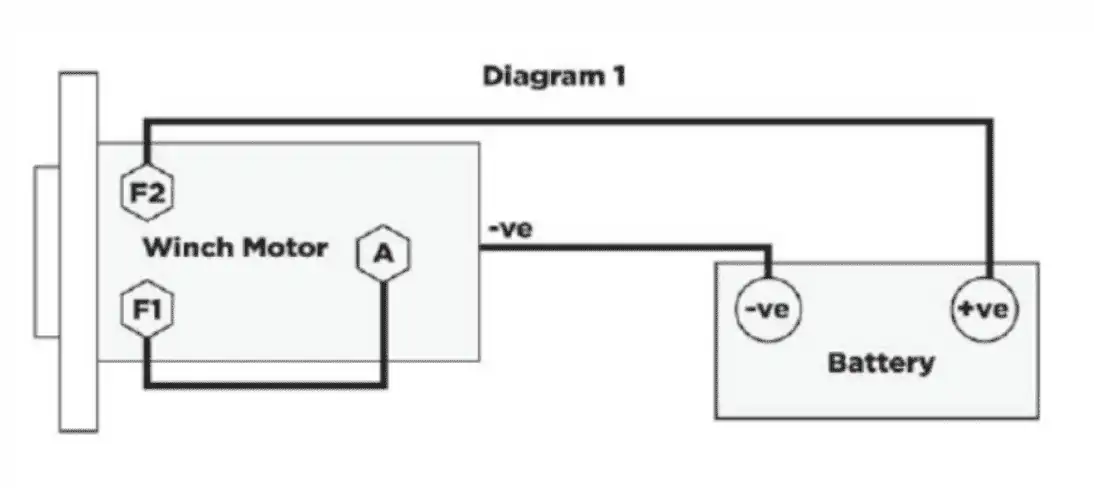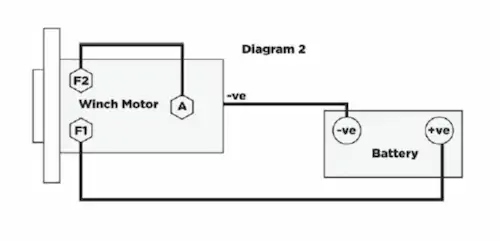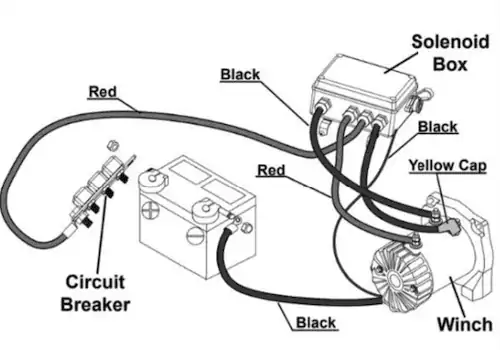If you own a winch, most probably you already know the importance of winches in times of severe need.
That’s why you also need to be prepared to repair your winch anytime too.
But, how can you be sure which part of your winch is damaged?
Well, we understand that troubleshooting the problem in a winch can be a disastrous job.
It’s because the winch has two main components: a winch motor and a solenoid box.
Now, when a winch stops functioning, unless you test it out, you can’t tell which part is responsible for the malfunction.
To test out if your winch is indeed damaged or it’s the solenoid that’s been hurt, you need to wire a winch without a solenoid.
But, how to wire a winch without a solenoid?
Well, to know that, you have to follow the guide below. Then, you’ll be able to wire your winch without any difficulties.
So, let’s go!
A Winch Solenoid: What Is It?
To state in simple terms, a winch solenoid is a device that regulates the current flow from the power source to the winch motor.
Depending on the loads that are put on a winch from different levels, its motor needs different levels of electric current.
Here, the job of a solenoid is to provide the necessary amount of electric current to the winch motor.
Also, the winch motor makes sure that excessive electric current doesn’t run into the winch motor and burn it.
That’s why you’ll see that most high-quality winches are equipped with a solenoid box.
Wiring A Winch Without A Solenoid: Why Should I Do It?
When you see your winch malfunctioning, it’s safe to say that either the motor is damaged, or the winch solenoid needs to be changed.
Now, in order to determine which device you need to repair (winch motor or the solenoid), you have to rewire your winch motor without a solenoid and see if it still runs.
If you see your motor running even without a solenoid box, it means that your winch motor is still good to go.
Now, remember, this wiring is only applicable for testing purposes. In a real-life scenario, you cannot use a winch without a solenoid device attached to it.
But, to test if the winch motor still runs or not, you can rewire the motor without a solenoid device attached.
This way, you can quickly pinpoint if the damage is in the solenoid or the motor.
How To Wire A Winch Without A Solenoid? [Steps That Actually Work]
Part A: Ensuring Safety
Before you attempt to rewire your winch, the first thing to do is maintain safety. In order to have a flawless solution to your problem, always make sure that you properly follow the safety precautions.
Use the following tips for ensuring your safety in the time of wiring your winch:
-
Be Vigilant
You need to understand that electric winches are very powerful machines. They are designed to pull thousands of pounds of weight within seconds.
So, always be aware of a winch’s power and respect it.
But, don’t be afraid of it. Also, don’t forget that if you are not careful with your working steps, you can hurt yourself very severely.
-
Have A Tidy Working Place
In the process of wiring your winch, you can mistakenly mess up the steps if you are not in the best state of mind. Many a time, a messy working place is the cause of high stress in the mind.
So, we recommend that you keep your working place tidy and organized when you are wiring your winch. That way, you can follow the wiring steps in a calm state of mind.
-
Protect Your Hands
You also need to be aware that you’re going to use your hand as the prime tool for the wiring job.
Now, the worst thing you can do to yourself is to leave your hand’s safety out of the picture. Never do that.
Make sure that you are always wearing protective gloves at the time of working with electric circuits.
Why? It’s because the winch is a very powerful machine.
Hence, it can easily hurt your fingers and damage your skin.
On the other hand, when working with electric circuits, it’s not very uncommon to see people being hit by electric shocks. So, don’t forget the hand gloves.
-
Wear Appropriate Clothing
It goes without saying that every job has its suitable wearables. For electrical jobs, you will need to have appropriate clothing as well.
When you are working with your winch, we recommend that you avoid wearing loose clothing that might get tangled with the winch’s machine parts.
Part B: Wiring The Winch
Now, in this section, we will lay down all the instructions assuming that you have a winch that already has a solenoid connected to it. So, you can follow the steps below to rewire your solenoid-connected winch to run without a Solenoid:
Step 1
As the first step, you will detach the positive (+) terminal of the battery from the solenoid. Usually, it’s the red wire.
Step 2
Now, do not detach the ground terminal from the battery. Let it stay connected as it is.
Step 3
Also, now you are going to recognize the labels of the terminals in your winch motor. There should be 3 terminal points in your motor with 3 designated names: “A”, “F1”, “F2”.
Step 4
First, you are going to connect the “A” terminal with the “F1 ” terminal with a jumper cable. And then, connect the positive (+) terminal of your battery to the “F2” terminal of the winch motor.
As a result, you should see the winch motor starting to function and begin to rotate.
Now, if you find this step a bit confusing, follow this simple winch diagram instead:

Step 5
In this step, undo the wiring you did in step 4.
Step 6
At this point, you are going to connect the “A” terminal with the “F2″ terminal with a jumper cable. And then, you will connect the positive (+) terminal of your battery with the “F1” terminal of your winch motor.
In turn, you will see that your motor has started action and it is rotating in a different direction relative to its rotating direction in step 4.
Now, if you are having difficulty following this step, use this diagram:

Step 7
Finally, after following steps 1 to 6, if you observe that the motor has indeed rotated in both directions (clockwise and counterclockwise), you can rest assured that your winch motor is still operational.
So, the fault does not lie in the winch motor. But, it’s the solenoid unit that needs to be replaced.
How To Rewire The Solenoid With The Winch Motor?
Now that you are certain that the solenoid piece needs to be replaced, you can buy a new solenoid piece and wire it to the winch motor.
To connect your new solenoid box to the winch motor, follow the guide we have provided below:
Step 1
At first, take a thorough look at the 12-volt winch solenoid wiring diagram we have provided below:

Step 2
Then, you will notice that the new solenoid box has 2 black wires in it. You will connect the black wires to the “F1″ and ” F2″ terminals of the winch motor.
Step 3
After that, you should also notice that a solenoid has 2 red wires. Connect one of the red wires to the “A” terminal of the winch motor.
Then, connect the other red wire to the positive (+) terminal of the battery.
Step 4
Finally, connect the ground terminal of the battery to the winch’s body and the solenoid’s body (or the solenoid’s ground terminal).
And there you go, congratulations! You just successfully connected a solenoid piece to a winch motor using a 12-volt winch solenoid wiring diagram.
How Do I Detect If Any Winch Solenoid Is Bad?
Other than testing out your winch motor, there are other effective ways to detect a problematic solenoid as well.
First of all, if your winch solenoid is permanently damaged, your winch will cause extreme overheating.
Although it will create a lot of heat, it will still run. Now, if you notice this behavior in your winch, you can immediately pinpoint that the winch solenoid has malfunctioned.
In addition to that, if the condition of the solenoid is not up to the mark, the winch motor will display erratic behaviors such as inconsistent reeling speed and variable torque generation.
Generally, a winch with a working solenoid box will not show any sign of erratic change in the line speed or the motor torque.
But, if the winch is indeed displaying this behavior, you can conclude that the solenoid has gone fully out of commission.
In that case, you immediately need to replace your solenoid box.
Other than the above-mentioned behaviors, the motor can also show a periodic change in its rotation.
For example, sometimes the motor will run in a clockwise direction and it will also show sudden rotations in the counter-clockwise direction as well.
This type of behavior also ensures that the winch solenoid is damaged.
Frequently Asked Questions
Is It Mandatory To Install A Circuit Breaker In A Winch?
No, it’s not mandatory to have a circuit breaker in your winch for it to run.
But, we still recommend that you have a circuit breaker or fuse installed in your winch.
It’s because a circuit breaker can work as an extra protective layer to save your winch from accidental electric shocks.
In case of a short circuit event, if you have a circuit breaker connected, your winch motor will not be damaged.
Instead, you’ll only have a tripped circuit breaker which you can just reset later on.
How Much Electric Current Does A 12-Volt Winch Draw?
Generally speaking, a 12-volt winch motor will draw up to 215 amperes of electric current when running under full load.
But, the electric current draw amount can fluctuate depending on the weight load.
How Fast Can A Winch Drain Your Vehicle’s Battery?
Even if you have a large-sized battery installed in your vehicle, the winch running on full load for 10 to 20 minutes can completely drain out your vehicle’s battery.
Is An Electric Winch Better Than An Engine-Powered Winch?
Ans. In most cases, an engine-powered winch is way more powerful than an electric-powered winch.
As engine-powered winches take direct power from the car’s engine, they have no restrictions on power consumption.
As a result, engine-powered winches can pull a higher weight load than electric ones.
On the other hand, electric winches need to run on a battery.
If the electric power is drawn from the car’s battery, there’s a chance that the battery of the car will be overloaded and permanently damaged.
But, a major positive side of having an electric winch is that it can still operate even when the car’s engine is down.
What Is The Rating Convention For Electric Winches?
Electric winches like all other winches are rated on how much load weight they can pull.
Since different types of electric winches draw different levels of electric current, they can pull different levels of weight loads.
That’s why electric wrenches can depart from one another by a vast margin because of their rating based on their weight-pulling capacity.
Finishing Words
If you carefully follow the guide we have provided above, we are confident that you will easily be able to sort out any problem you might be facing with your winch.
But, in any case, we recommend that you consult with an expert before attempting to tinker with your winch yourself.
However, if you follow the correct safety precautions as we have indicated in the discussion above regarding “How to Wire a Winch without a Solenoid?” you should have no problem figuring out the solution yourself.
So, we bid you the best of luck.



